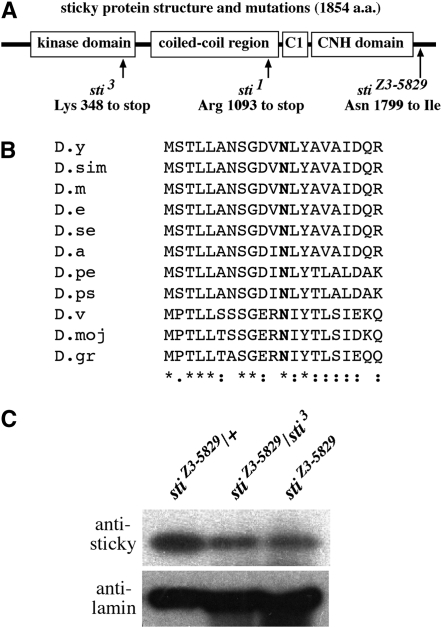Figure 2.—
stiZ3-5829 mutation in a conserved residue results in reduced sticky protein levels. (A) Gene structure depicting previously described sticky mutations and the position of the stiZ3-5829 N1799I mutation. The sticky gene product encodes a conserved kinase domain, a coiled-coil region, a cysteine-rich (C1) domain, and a citron-N homology (CNH) domain. (B) An alignment of 20 amino acids immediately adjacent to the N1799 site is shown in boldface type. The Drosophila species listed are in the following order: D. yakuba (D.y), D. simulans (D.dim), D. melanogaster (D.m), D. erecta (D.e), D. sechelia (D.se), D. ananasae (D.a), D. persimilis (D.pe), D. pseudoobscura (D.ps), D. virilis (D.v), D. mojavensis (D.moj), and D. grimshawi (D.gr). (C) Western blot of sticky protein levels in heterozygous stiZ3-5829/TM6B control (left lane), stiZ3-5829 homozygotes (middle lane), and stiZ3-5829/stiZ3-5829 (right lane). Nuclear lamin is used as a loading control (bottom). The truncated sticky protein predicted to arise from the heterozygous sti3 extract cannot be detected by this antibody, which was raised against a C-terminal antigen as previously described (D'Avino et al. 2004).

